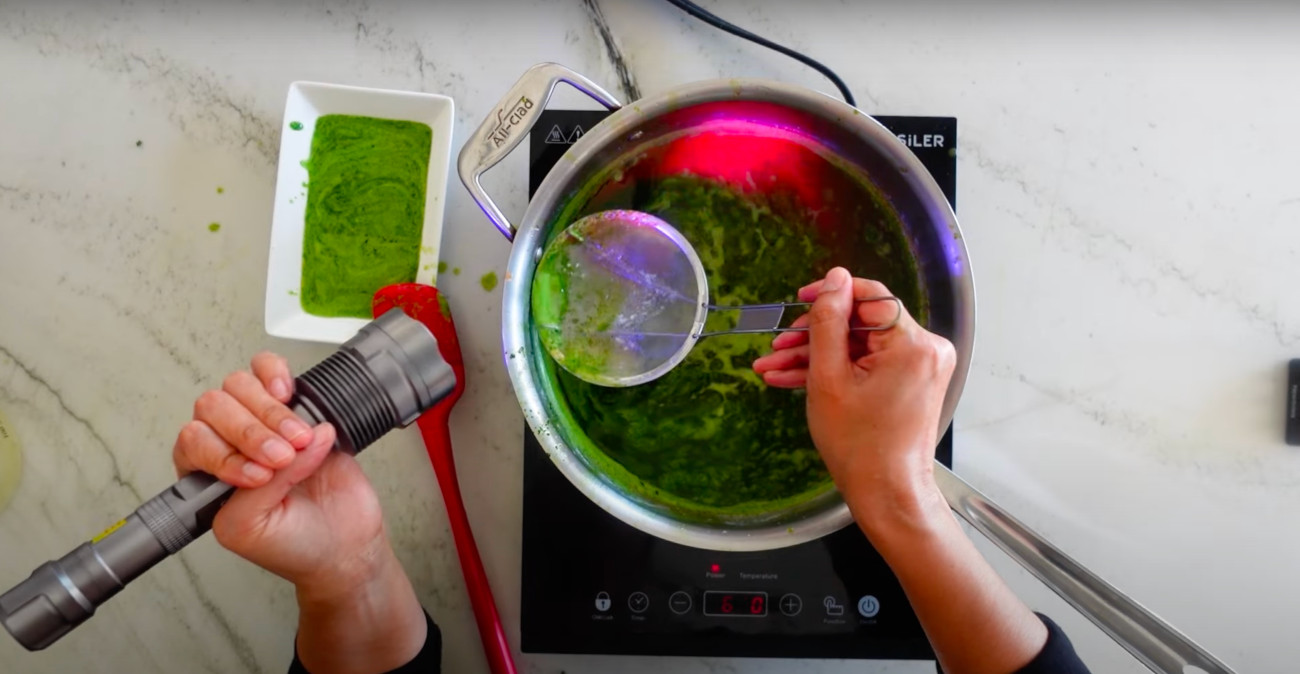Bright colors aren’t just reserved for highlighters. You can make a show-stopping neon-colored food under UV light with a scientific trick. Now you may be thinking, won’t a glow-in-the-dark cake be full of added chemicals and tons of dyes? You’ll be surprised to know the secret ingredient!

They say baking is a science, but this color-changing trick turns that concept on its head. Sometimes recipes turn into science projects, and that is what this baker making this video, Adriana of Sugarologie, realized.

To get intense, vibrant results, she turned to biology texts and saw that chlorophyll, the green stuff in plants, does a funny thing under UV light. When you shine UV light onto green chlorophyll-rich plants, the plant absorbs the high wavelength colors and emits lower wavelengths which are deep, vibrant red.

Now getting this bright red color wasn’t easy. Initially, Adriana used a blend of water and spinach to extract and make chlorophyll paste, but the color wasn’t intense.

Adriana realized the water molecules were too polarizing against the chlorophyll, and a more neutral base was needed. Enter fat. She experimented with several fats, but fats with the least water — like coconut oil and shortening — were the best options for getting the strongest UV-light reaction.

After combining the puree, straining, and mixing with the fat, the green fat mixture is heated again. The heating separates the proteins from the chlorophyll to make a blood-red UV light reaction.
Once cooled to room temperature, you can add the paste to anything you make to bake or cook. To maintain the strong brightness, you should add it to recipes that already have a lot of fat. You can’t swap out all of the fat for this chlorophyll paste, as it doesn’t have the emulsive proteins that normal, non-heated fats have. If you used just the chlorophyll paste, your baked goods and buttercreams would have a gritty un-emulsified quality to them.
Watch the whole process, it’l be a great way for kids to really apply their science skills!













